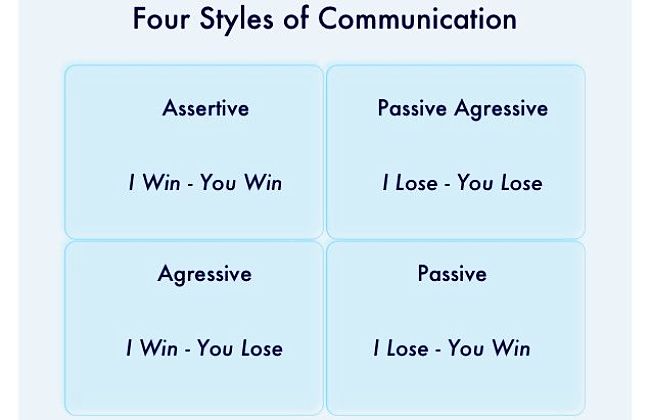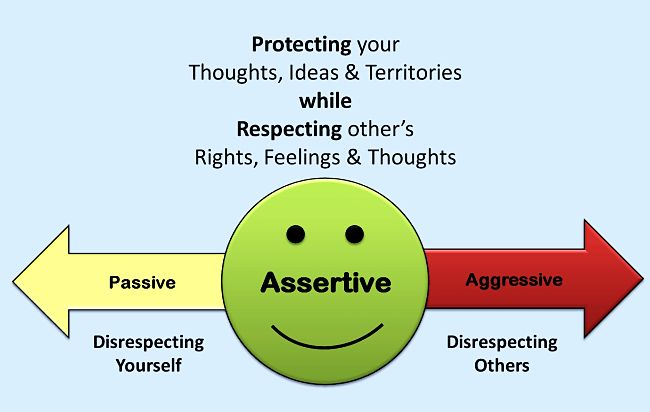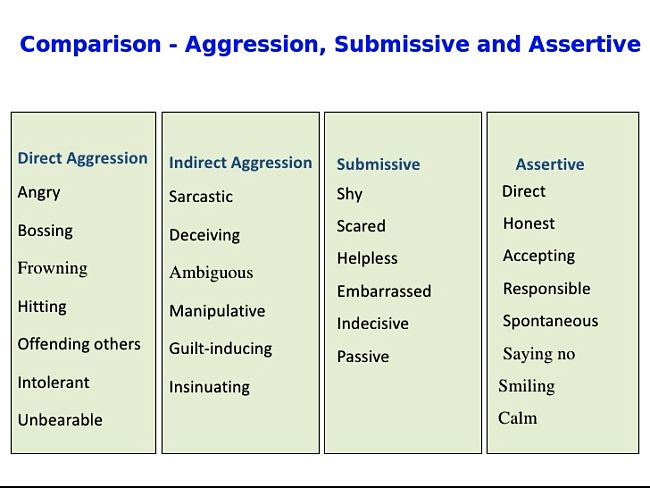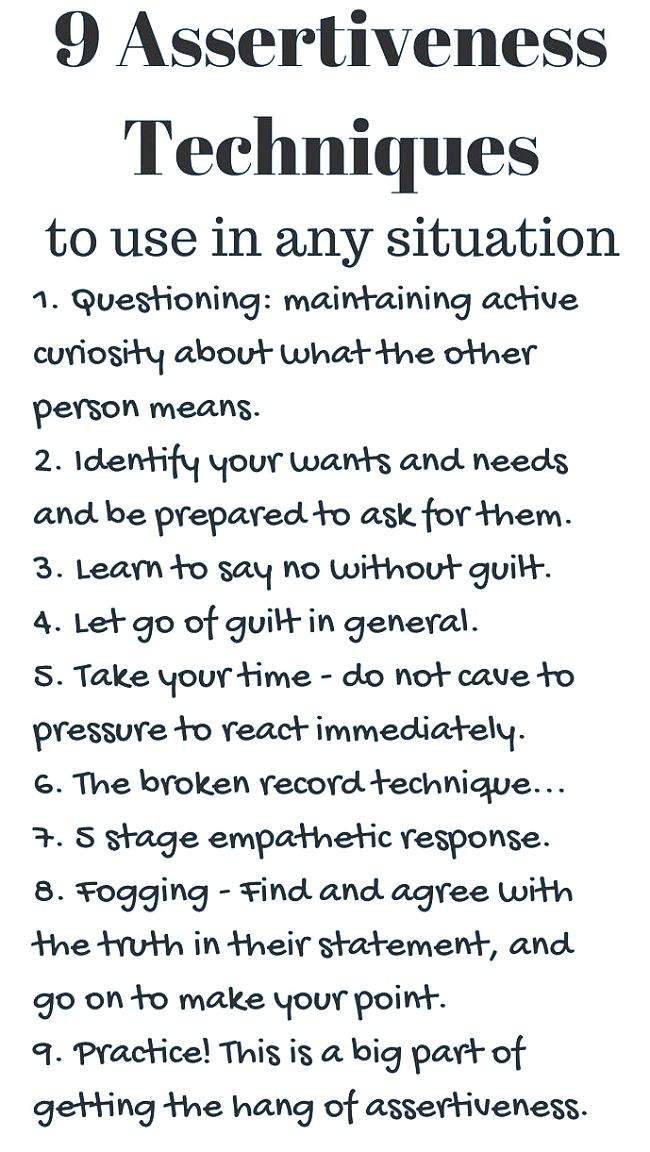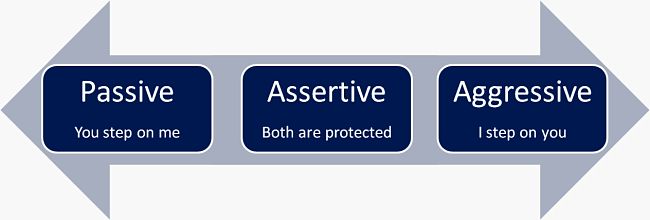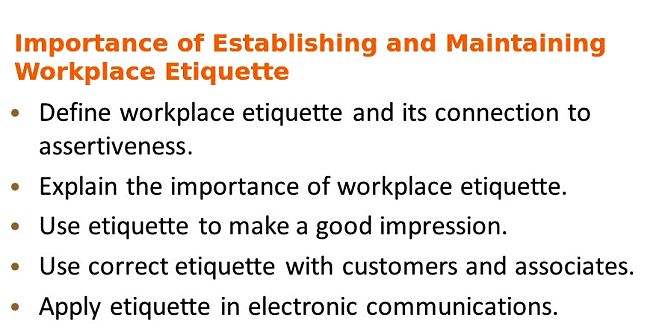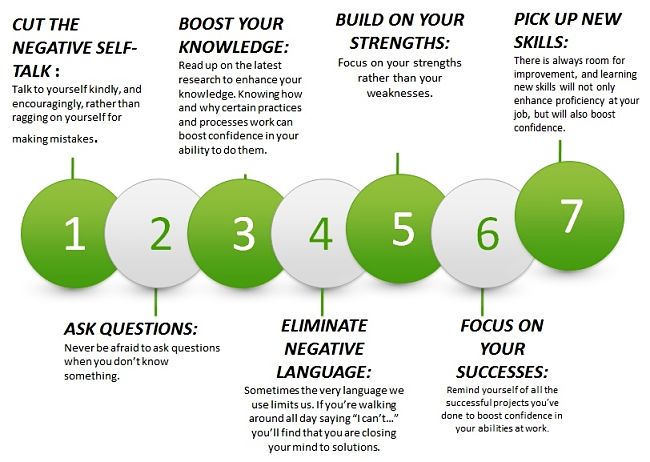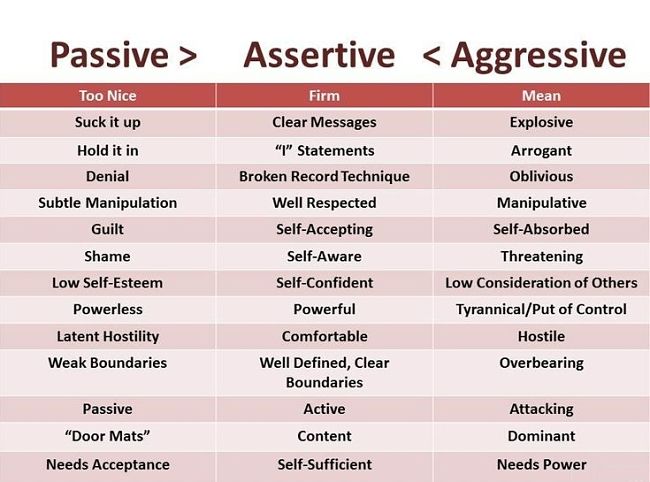Develop Effective Communication Skills with These Assertive Workplace Tips
Developing effective communication skills and strategies at work is very important for your advancement and productivity. How you communicate has a profound impact on your ability to achieve things, and get on with people because it builds trust. Some people have natural abilities to communicate well, but others need to learn the skills and apply them in their workplace. Much of it is about taking positive and assertive actions to avoid misunderstandings and potential conflict. Communicating effectively leads to better outcomes in solving problems, achieving your objectives, and developing and maintaining good office relationships and morale.
Effective communication doesn't just happen. There is no sense thinking that things will improve as you get to know people better - they could get worse. Open, effective and genuine communication is important for making new friends and sustaining older ones, and for maintaining healthy relationships.
Ineffective communication is like rust, once it starts, it tends to spread and risks degrading the structure and appearance of something. If you have poor communication people may wrongly fill in the gaps in what people know about you, and may start to distrust you. This can make it harder to communicate effectively in your workplace. This article aims to provide the skills and tips to improve your communication.

Broad Types of Communication
There are four types of communication that can be expressed as:
Me and only Me - Aggressive Approach
Aggressive people communicate in a domineering and forceful way that is essentially one directional and does not allow for responses. This can be blatant, or more subtle, such as finishing other people's sentences and butting in before the other person has a chance to finish what they are saying.
A sure sign of this approach is the person's tone of voice and facial expressions that may be distinctly unfriendly. In the worse case, this can amount to bullying.
These people always give the impression that the other people's needs don't matter and are not worth listening to. You can develop skills to tone down this approach if you tend to butt in.
You should be aware that it can be a sign that you are afraid of losing the argument and want to win quickly at all costs. By butting-in you are trying to curtail an argument that may make sense. It is often driven by impatience - you want to get to the point quickly and judge that what is being said is irrelevant. Often the person saying it will only realise this after they have finished so let them go and finish it.
It may require deliberate attempts to listen - allowing for the other people to response. You can also modify your body language and find better ways of winning an argument instead of always butting in.
Me Last - Passive Approach
Passive communication - is at the opposite end of the spectrum - it involves putting your needs last and being a complete 'sponge', simply absorbing what other people say to you.
In this case you hold back and bottling-up your thoughts, responses or feelings. You seldom ask for what you want or showcase your ideas by providing input. Once again your body language is a key aspect and the approach worsens when your colleagues discover that you are passive. They may start walking all over you, or demeaning your abilities, because they know you will not assert yourself. So, you bottle things up and could become resentful.
The message pushed by passive communication is 'My opinions and needs don't matter' and 'I'm unwilling to contribute'. Once again body language is a tell-tale sign, and the approach becomes self-expanding as people in the work place recognise your stance and approach to communication.
Listen to Me When its my Turn
Assertive communication - can be developed and worked-on, even if it does not come naturally to you. It involves a proactive approach that involves you taking every opportunity to clearly express what you want, your comments and responses, what you think and how you feel.
This is done in the context of mutual respect - that you apply to others, and that you expect others to apply to you.
The operating principle for this approach is that 'We all matter, we all have the right to contribute and so lets work through it and find a solution together for mutual benefit'.
Assertive communication increases your opportunities for getting what you want, having your say, avoiding conflict and helping to maintaining good relationships in the workplace.
Being assertive when communicating means that you adopt an 'engaged and interested' body language. You are more open and everyone has a better idea of where you stand on a given topic.
People expect input from you and know that you won't try to dominate and exclude others in the communication. Being assertive means you can:
- Express your own comments, needs, responses, ideas, thoughts and feelings
- Make reasonable requests from other people and expect to be able to provide input. You accept that others may reject your suggestion and the outcome may not be what you want or desire.
- Present and stand up for your own rights and your right to have an input
- Say 'no' to things put forward without feeling guilty or expecting negative consequences.
Poor and Ineffective Communication
Poor communication often leads to tension and misunderstandings. This can create bad feelings between individuals in the workplace. It is important to realise that effective communication is a group thing in which all individuals have a role.
Where possible, you should push assertive communication as a general model to be adopted by your group. You should try to find ways to deal with aggressive and passive communication by various members of the group. Open communication relies on trust and mutual respect.
Often communication may break down not because of what is said, but because of what is unsaid or not properly talked about. If the communication is closed people will fill in the gaps with lots of wrong assumptions.
People may believe you agree when you don't. People may assume that you did not say something because you were afraid of the consequences or for the completely wrong reason.
The communication then becomes a combination of truths, half-truths and incorrect facts, feelings and assumptions. This will taint the outcome and hamper any real progress.
It is also important that all issues are fully dealt with, if only in a brief way. Half-finished or half-baked communication is poor communication, in a similar way to a heated argument or a meeting dominated by one person.
Common Communication Errors and How to Avoid Them
Error 1: Mind-Reading
Mind-reading occurs in most relationships, and especially at work where secrets abound. It often causes people to get upset because it leads to misunderstandings associated with people having to fill in the gaps due to poor communication.
Often we wrongly assume that people already know our opinions and what we think. We believe that they know us well enough to understand where we are coming from, even we have not expressed it clearly and explicitly.
Therefore it is very important to clearly tell others what are your opinions, ideas and responses are, and not to assume that they already know.
Error 2: Avoiding Communication
Being assertive is also about ensure that we speak up at the right time. Silence means acceptance.
People often avoid or fail to communicate properly because they are embarrassed, don't want to start a fight, or make someone else upset. The problem here is that not speaking up can often make things worse. This can cause tension that can escalate to cause angry outbursts.
Error 3: Labelling
Don't use labels to criticise someone else - for example calling someone a 'liar' or a 'fool'.
Labels are a good example of alienating messages because they make the criticism relate to the 'person' rather than to their behaviour or the facts. You can criticise a person's behaviour, for example, by claiming that they were 'unfair', rather than calling them 'cruel' or 'unreasonable'.
Error 4: Criticisms and Alienating Messages
Public criticism, put-downs, or making out that someone is a fool or stupid is aggressive communication and leads to anger and pay backs.
This kind of interaction can also cause a break-down of communication, when no one wins.
Some examples of alienating messages include: sarcasm, negative comparisons, put-downs, threats and demeaning comments referring to mistakes or inadequacies.
Body Language – The Key to Being Assertive
Body language is the foundation of effective assertive communication because it conveys a message about the response you expect from your audience. Some tips for getting the most from body language are:
- Stand with hands clasped in front of you, never crossing your arms.
- Retain your position and do not slump or shy away from the person you are speaking to. Maintain a relaxed, comfortable but engaging and upright posture, when you are speaking or just listening. This maintains your authority.
- Making good eye contact and maintaining it without looking away at any time. This show you are strong and fully engaged.
- Nod occasionally to acknowledge strong points in the conversation. This shows you are interested in a conversion not a lecture.
- Do not exhibit signs of nervousness such as picking at your nails, fidgeting wringing hands, or anything else that the person communicating with you will regard as a distraction from tyour conversation.
Speaking Tips
When speaking, try to be concise and clear in your expression as this generates a sense of authority and shows that you know what you are talking about. Stick to the topic and use hand gestures, switching eye contact and changes in voice and emphasis to keep the listener completely engaged and listening to every word. Don not let the listeners cut you off mid sentence or fob you off and this destroys your assertiveness.
People will be more included to interrupt you if you ramble on and go off topic. Focus your gaze on those drifting off or showing signs of interrupting or attempting to belittle what you are saying. You may need to prompt them with a rhetorical question such as " This is very important - Don't you think so? Or tell them not to interrupt, telling them that it will be their turn soon
Tips for Engaging Your Audience When Speaking
Making eye contact - Eye contact conveys interest and encourages your partner to be interested in you in return. Whether you are speaking or listening, looking into the eyes of the person with whom you are conversing can make the interaction more successful. One tip is to deliberately look into one of the listener' eyes and then move to the other eye. Going back and forth between the two makes your eyes appear to sparkle. Also shift between adjacent members of your audience. Another tip is to imagine a letter "T" placed on the listener's face, with the top cross bar being placed between the eye brows and the vertical line coming down the center of the nose. Keep your eyes scanning that "T" zone when speaking.
Use body languageand frequent hand gestures-- These include body language gestures with your hands and face. Make your whole body talk and become part of the communication. Use smaller gestures for individuals and small groups. But use larger gestures for bigger groups.
Develop Strength in Your Voice — A high or whiny voice, or a weak insipid voice is not regarded as one with authority. A high and soft voice can make you very prone to being interrupted or ignored. Begin doing exercises to lower the pitch of your voice from high to low. Practice this and techniques to keep a forceful tone – strong and having a low pitch.
Use a volume for your voice that is appropriate for the setting and audience size - Speak more softly when you are speaking with a few people. Speak louder when you are speaking to larger groups or across a wider space. Volume keeps your audience engaged.
Animate your voice with Highs and Lows and Emphasis Peaks - Avoid speaking in a monotone and use dynamics. Your pitch should raise and lower periodically. Radio DJ's are usually a good example of how to do this.
Don't be tempted to send out mixed messages - Make your words, gestures, facial expressions and tone match. You want to avoid the sense that you are faking it.For example, disciplining someone while smiling sends a mixed message and is therefore ineffective. If you have to deliver a negative message, make your words, facial expressions, and tone match the message. This also applies for supportive or positive messages. Be consistent.
Tips for Active Listening and Attentiveness Signals
Develop active and effective listening skills - Engagement requires that you can not only speak effectively, but listen effectively as well. Listening to the other person's words and engaging what the other person is speaking about is essentail for an effective conversation. One tip is to make mental notes of key points when someone is speaking to you. This means you will be ready to respond to the most vital issues when it is your turn.
Some Tips to improve active listening skills are:
- Keep engaged by asking questions and seeking clarification.
- Maintain eye contact, to the degree that you all remain comfortable.
- Minimize internal distractions - keep engaged and focused on the speaker.
- Wait until the speaker is finished before defend yourself from criticism.
- Face the speaker - Sit up straight or lean forward slightly to show your attentiveness through body language.
- Minimize external distractions - Turn off the TV. Put down your book or magazine, and ask the speaker and other listeners to do the same.
- Keep an open mind - Wait until the speaker is finished before deciding that you disagree. Try not to make assumptions about what the speaker is thinking.
- Focus solely on what the speaker is saying - Try not to think about what you are going to say next. The conversation will follow a logical flow after the speaker makes her point.
- Respond appropriately to show that you understand - Murmur ("uh-huh" and "um-hmm") and nod. Raise your eyebrows. Say words such as "Interesting," "Really," as well as more direct prompts: "What did you do then?" and "What did she say?", "What was the next step?"
Related Articles
=> Benefits Interval Training, Best High Intensity Workout Programs
=> Benefits of Coffee and Caffeine for Team Sports and Gym Workouts
=> Ways to Stay Active at Work and Home - Avoid Inactivity Risks to Health
=> More Active at Home and Work - Get Up, Stay Active, Keep Healthy, Avoid Inactivity
=> How to Stay Active While Sitting at Work - Tips, Methods, Devices
=> Q&A: How to Deal with Office Gossip and Difficult People at Work
=> Why Some Naps Work and Not Others - Guide for Timing the Perfect Nap
=> How Infections Spread in the Workplace - Sites, Causes, Prevention Strategies
=> Simple TEN in TEN Strength Training Workout Using Hand Weights
=> Pedal While You Work, Exercise at Your Desk, Pedal Power

